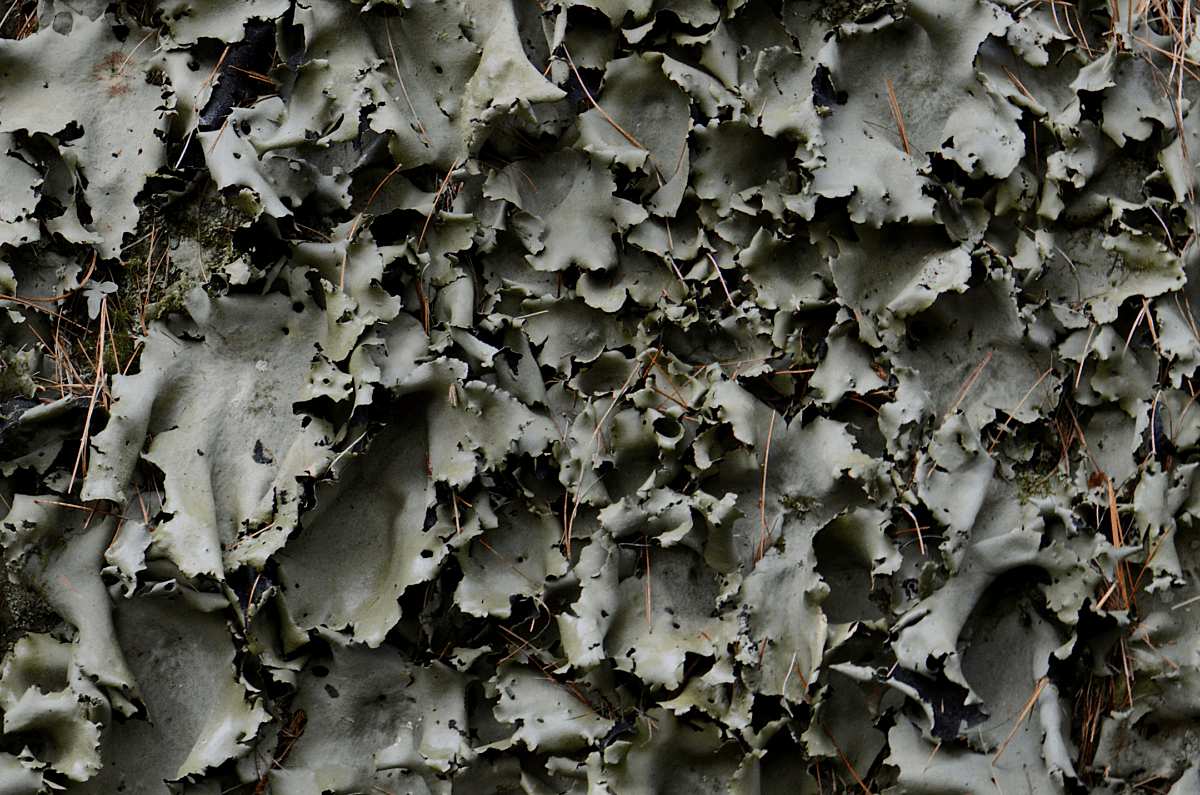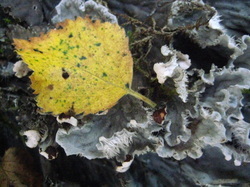They look like spatters of grayish-blue/green paint staining bark and stones: the dried-up, twisted forms of lichens. Once you start looking, you notice them everywhere at the Arboretum — on rock walls, stumps, twigs and branches.
Lichens are two distinct and unrelated organisms — a species of fungi and a species of algae — living together in a symbiotic relationship. It’s not that they happen to be growing in the same place — they actually combine to form a whole new entity. Like any good relationship, it’s a two-way street.
Through photosynthesis, the algae creates food for both organisms, using sun, water, and air to make nourishing sugars. The fungus would starve without the algae’s photosynthesis.
The flimsy, moisture-loving algae, however, needs the support and structure of the fungus. The fungal cells surround the algae completely — like an apple pie with the crust being the fungus, the filling the algae. You can see the green gleam of the plant shining through the thin fungus crust, especially after a rain.

Lichens cling to surfaces with things that look like roots, called holdfasts. Holdfasts let the lichen adhere to the surfaces, but aren’t roots as they don’t suck up nutrients or water.
There are thousands of lichen types, composed of various combinations of algae and fungi with different species occupying different niches. For instance, a lichen that needs sunlight might grow on top of a branch, while one that prefers moisture and shade might grow on the underside of the same branch. They can survive in the most inhospitable habitats imaginable. They’re a tiny touch of green in the Sahara – and the dominant vegetative species in the Antarctic. They grow on the stone heads at Easter Island and on the top of Mount Marcy. There’s almost nowhere lichens don’t grow — under the soil, on church steeples, even on the back of a slow-moving tortoise.

However, there are areas that lichens cannot survive due to their structure. Most types of land plants have a waxy coating called a cuticle on their leaves. This covering functions like our skin, keeping moisture in and infections out. Lichens don’t have this protective layer permitting absorption of every drop of moisture, a big advantage when living in arid locations. Lichens are essentially living blotters that soak up everything they come in contact with. Unfortunately this permeability makes lichens highly susceptible to air pollution. Where smog and pollutants rise from cars and factories, lichens vanish. Scientists have been using this attribute as bio-monitors since the 1800s. Lichens are the proverbial canary in the coal mine. Like the dead canary, the absence of lichens is a cry of warning, making it nature’s pollution monitor.
Here at the Arboretum the air is sweet and clear. The lichens tell us so.
